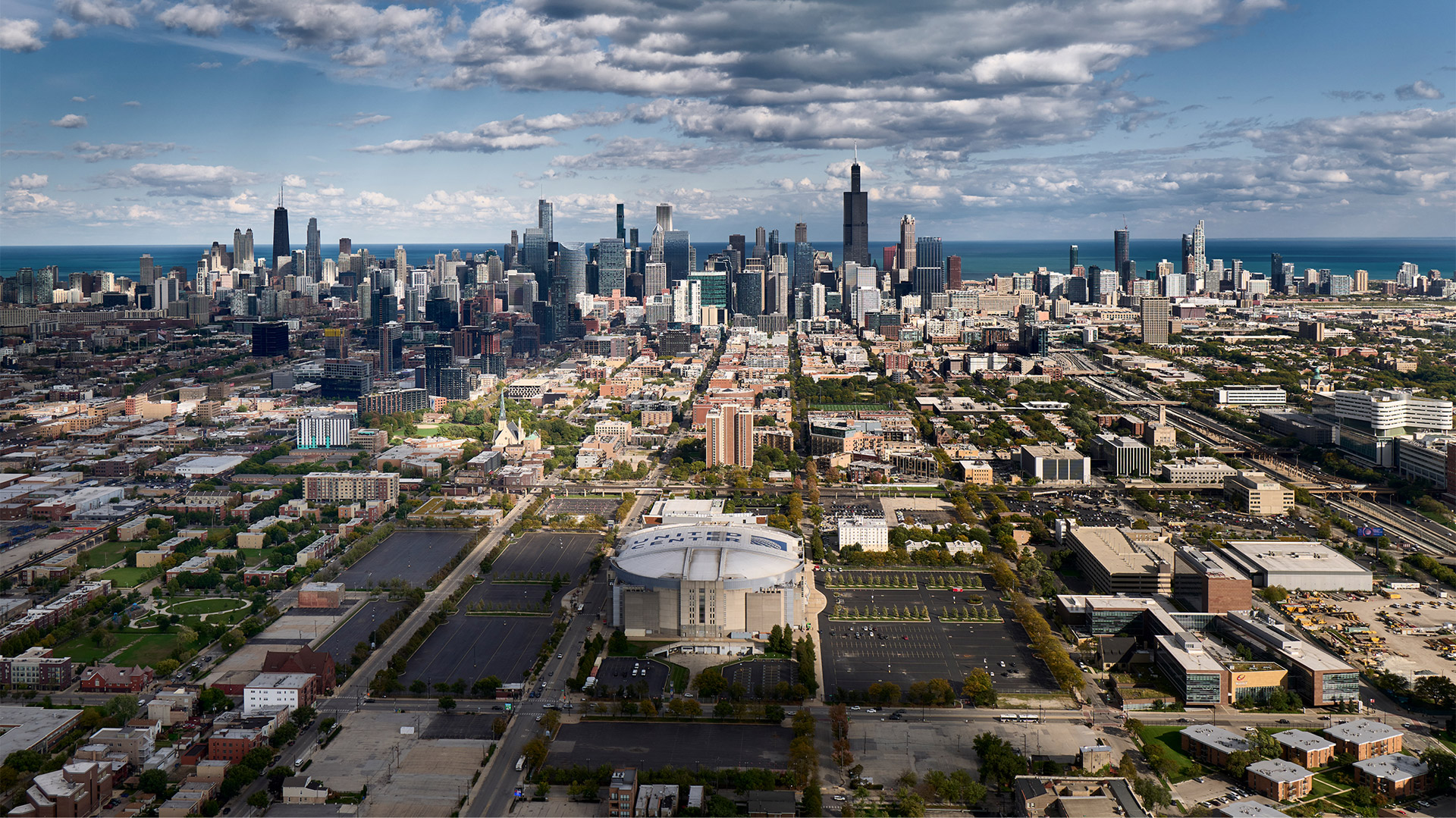CHICAGO TRIBUNE: Big plans for United Center area need a tighter link to the ‘L’
https://www.chicagotribune.com/2024/07/31/opinion-united-center-development-cta-train-line/
It’s hard to remember a Chicago real estate proposal that made a better first impression than the Wirtz and Reinsdorf families’ proposal to create a new neighborhood around the United Center.
The media, usually skeptical of big developments and developers, embraced the project immediately.
Ald. Walter Burnett Jr., 27th, said he was excited by the promise of thousands of jobs for his constituents and the 5,000 new units, 20% of them designated “affordable,” planned for the long-neglected and depopulated West Side neighborhood.
The urbanists so far are silent and no doubt asking, “Yeah, but what’s the catch?” But there doesn’t seem to be one. The plan, at least as revealed so far, pushes all the right buttons, with housing, entertainment, restaurants, schools, social service agencies and the United Center’s huge athletic events and conventions grouped into a safe, walkable neighborhood.
Best of all, the single biggest obstacle to the neighborhood’s recovery, the oceanic expanse of parking lots surrounding the United Center, is scheduled to disappear into a single, multistory parking structure that will include a 6,000-seat music hall, stores, restaurants and a landscaped green roof.
It’s the consolidation of several huge parking lots that makes the whole scheme work. The area bounded by Paulina and Lake streets, Damen Avenue and Jackson Boulevard is so big and empty that if the United Center weren’t standing in the middle, it could serve as a small airport. Erasing the parking lots leaves almost half a square mile for redevelopment into housing, commercial space, restaurants, parks and even a hotel or two.
Only one thing is missing to make this vast, nearly empty space into a model urban neighborhood: rapid transit.
The space may appear transit-friendly because the CTA’s new Green Line station at Damen and Lake is about to open. But that location is a half-mile walk from the United Center. Devoted Bulls fans will stick with their cars — especially on a cold night in January.
Reliance on the Pink Line “L” is likewise unrealistic. Its noisy-but-picturesque 19th century steel trestle structure lies a full two-block walk from the front door of the United Center and even farther from the new neighborhood stretching west behind it.
A more successful solution would be to reroute the Pink Line over new infrastructure sweeping southwest across Warren Boulevard and then curving south to a new station built over the VIP parking lot at the main entrance of the United Center. Passengers would step out of their trains, take an escalator to ground level and salute the statue of Michael Jordan as they enter the building through their own weatherproof walkway. Just south of the station, the new line would swing back to the southeast and rejoin the original Pink Line just north of where it crosses Ogden Avenue.
A Pink Line reroute makes sense on several levels.
- It would dramatically reduce the need for cars to access the United Center and other neighborhood destinations and would make car-free commuting available to new residents.
- It would be quieter than the legacy “L.” Trains would glide silently over a modern, concrete ballasted-trench overhead structure such as the one the CTA is introducing on its Red Line route between Lawrence and Bryn Mawr avenues on the North Side.
- It would open up space for new uses. Elimination of the legacy “L” structure would allow adjacent property owners along Paulina and Wood streets to expand their backyards onto the footprint of what is now the “L.” (And their property values would rise because their “L”-free neighborhoods would become quieter.)
- Property acquisition for the “L” diversion would be cheap because the entire route currently is occupied by parking lots, eliminating the expense of buying and demolishing buildings to create a transit alignment.
- The footprint of the ballasted-trench infrastructure is tiny compared to that of the legacy “L.” Two tracks are supported by a single concrete pylon, leaving abundant space under the tracks for community recreational uses, such as dog parks and skateboard ramps. Pedestrians can cross under the tracks at any point.
- It would promote intercommunity connectivity. Because the Pink Line joins the Green Line at Ashland Avenue, it offers easy access not only to the Loop and the South and West sides but also to the exploding office-and-residential Fulton Market neighborhood and the booming Randolph Street restaurant row. Fulton Market residents and workers will have fast, car-free access to United Center events. Out-of-town sports fans could leave their cars in the new United Center parking structure and dash over to Randolph Street for a post-game dinner without the struggle and expense of seeking another parking space.
A United Center stop on a rerouted Pink Line would work exactly as urban mass transit is supposed to work: moving thousands of people each day without cars to maximize the utility of home, work and leisure while appreciating the value of urban real estate and the natural environment.
Private investors have stepped forward boldly to build Chicago a thriving new neighborhood. Now it’s the public sector’s turn. Is the CTA as game as the Reinsdorfs and Wirtzes?
F.K. Plous is a transportation writer and director of communications for Chicago-based Corridor Rail Development.

